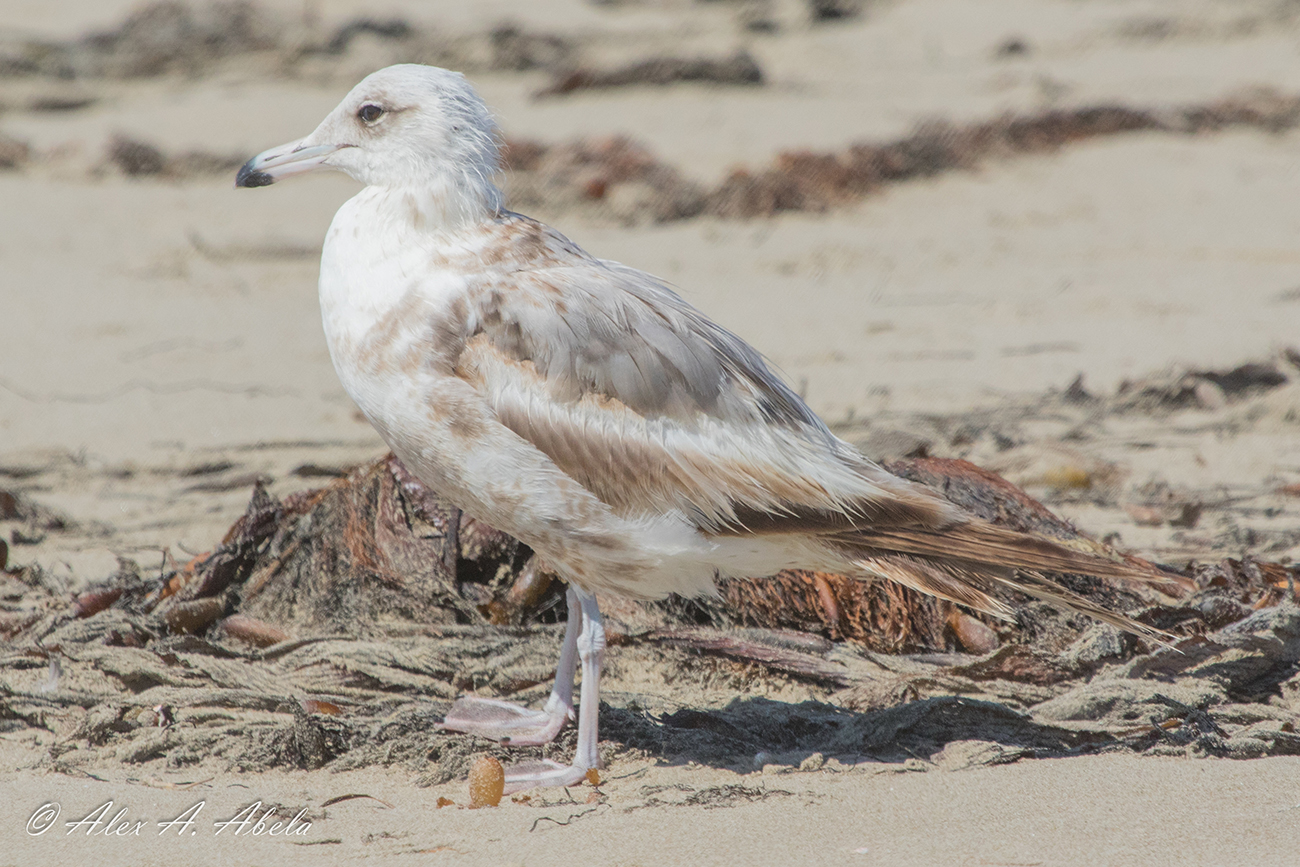|
|
Coordinators:
1cy June 2cy Jan 3cy Jan 4cy / sub-ad Jan adult Jan |
California Gull californicus 2nd PB molt (2CY), July 03 2017, Pismo beach, California, USA. Picture: Alex Abela.See Alex's Flickr site for many more images, illustrating the plumage development in this species. Caption read PB2 molt, but in this bird "potentially in PB2 molt". Living under sunny and marine conditions, the juvenile plumage is ragged and abraded in spring. By May/June, birds start PB2 molt, which is a complete molt taking the whole of summer to replace all feathers, including the large flight feathers. This PB2 molt commences by dropping P1, after which several molt waves progress throughout the feather tracts in the wings in the next couple of months: In the very early stage of PB2 molt, when P1 is dropped, this is often far from obvious in resting birds. Still, it is an important moment, as technically speaking birds enter their "2nd cycle" now. In the field it takes a little time to witness the PB2 process going on in any particuar resting bird. Easiest check is on missingcoverts or new inner wing-coverts and the upper tertial. PB2 molt is in progress when very fresh wing-coverts start to appear, easily distinguished from the worn adjacent feathers. Especially in taxa like CAGU, fresh wing-coverts in early summer stand out, as post-juvenile wing-covert molt was finished by autumn and halted throughout winter and early-spring. Therefore, in May, both old juvenile and replaced 2nd generation wing-coverts are far from fresh feathers.
|
 California Gull californicus
California Gull californicus